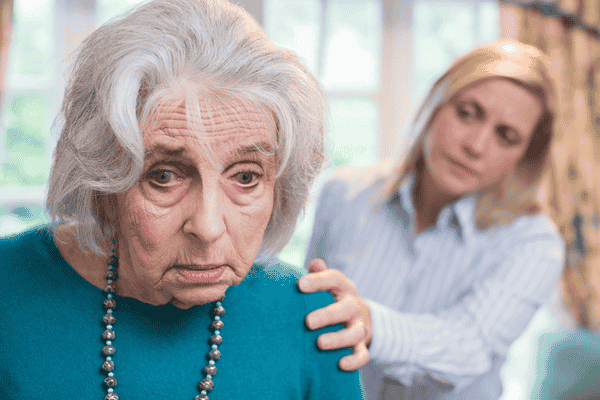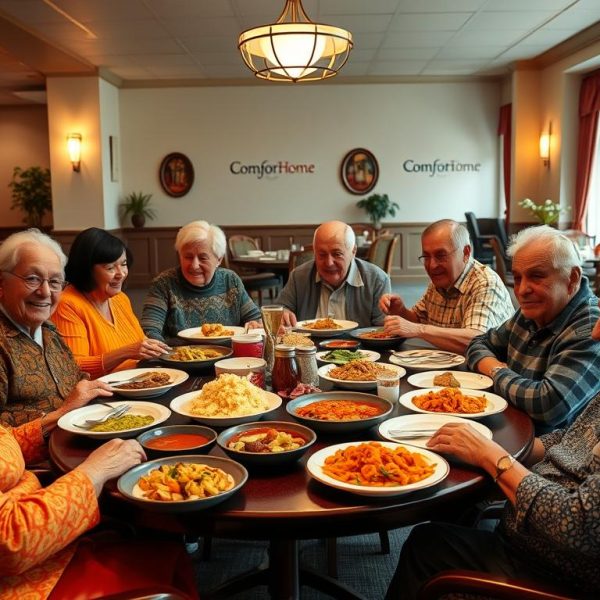Meet Eleanor. At 78, she was always the life of the party—her laughter contagious, her stories endless. But recently, something had changed. Her spark seemed dimmed, and her once-vibrant personality became a shadow of its former self. Eleanor’s family noticed she wasn’t as eager to join their weekend gatherings or tend to her beloved garden. Her appetite dwindled, and she often appeared lost in thought, distant from the world around her.
Eleanor’s granddaughter, Mia, was the first to voice her concerns. “Grandma, are you okay?” she asked gently one afternoon, after noticing her grandmother staring blankly at the television. Eleanor forced a smile, but Mia could see the sadness behind her eyes.
Eleanor’s experience is not uncommon. Depression in older adults is a silent epidemic, often overlooked or mistaken for the natural aging process. Understanding depression in the elderly is crucial because it affects not only their mental health but also their physical well-being, relationships, and overall quality of life.
The Hidden Struggle
Depression in older adults is often masked by other conditions or dismissed as a normal part of aging. Many older people, like Eleanor, might view their symptoms as just a natural decline, missing the underlying depression that might be taking root. The stigma surrounding mental health can also discourage them from seeking help, leading to untreated depression that significantly impacts their quality of life.
Symptoms such as persistent sadness, loss of interest in previously enjoyed activities, and changes in sleep and appetite might be attributed to other factors like physical illness or the aging process. Additionally, depression can be exacerbated by various age-related issues such as physical limitations, bereavement, and social isolation.
Eleanor’s family initially thought her lethargy and disinterest were just signs of slowing down with age. However, Mia’s persistence in asking questions and seeking help revealed a deeper issue. Depression, unlike sadness or grief, is a persistent feeling of hopelessness and lack of interest in life, which can lead to serious consequences if left untreated.
The Root Causes
Understanding why depression occurs in the elderly is key to providing the right support. Eleanor had recently lost her husband of 50 years. While she initially managed to cope with the grief, the ongoing loneliness and absence of her life partner gradually took a toll on her mental health. This type of prolonged grief can morph into clinical depression, where the sorrow and loss overshadow one’s ability to find joy or purpose in life.
Other factors contributing to depression in older adults include:
- Health Problems: Chronic conditions such as diabetes, arthritis, or heart disease can lead to a sense of helplessness and despair. The ongoing struggle with pain or disability can contribute significantly to a person’s mental state.
- Social Isolation: The loss of friends and family members, coupled with reduced mobility or relocation to a new area, can lead to increased feelings of loneliness and isolation. The lack of social interaction can exacerbate depressive symptoms.
- Financial Concerns: Economic pressures, especially for those on a fixed income, can add significant stress. Worries about covering basic needs or unexpected expenses can lead to feelings of anxiety and helplessness.
- Loss of Purpose: Retirement or the inability to engage in once-loved activities can lead to a loss of identity and purpose. For someone like Eleanor, who found joy in caring for her family and tending her garden, these changes can be particularly challenging.
Recognizing the Signs
Depression in the elderly can present differently than in younger people. Recognizing the signs early is essential for effective intervention:
- Persistent Sadness or Anxiety: If your loved one seems down most of the time, this is a significant indicator. They might talk about feeling hopeless or express a lack of interest in life.
- Withdrawal from Social Activities: Not participating in events or activities they once enjoyed, avoiding social interactions, or spending excessive time alone can be signs of depression.
- Changes in Weight or Appetite: Noticeable weight loss or gain, or changes in eating habits, can be physical manifestations of depression.
- Sleep Disturbances: Problems such as insomnia, oversleeping, or nightmares can be linked to depression. These disruptions can further impact overall well-being.
- Physical Complaints: Complaints such as frequent headaches, digestive issues, and unexplained aches and pains can be symptoms of depression, especially when there is no clear medical cause.
- Memory Problems: Depression can sometimes mimic cognitive decline, leading to forgetfulness, confusion, or difficulty concentrating. This can be particularly concerning if it seems to affect daily functioning.
Eleanor experienced several of these symptoms but was reluctant to discuss them, fearing she would burden her family. It was only through Mia’s careful attention and willingness to listen that they were able to seek help.
The Path to Healing
After Eleanor was diagnosed with depression, her journey towards healing began with a multi-faceted approach involving both medical and supportive interventions. Here’s a more detailed look at how Eleanor’s path to recovery unfolded:
1. Medication Management
Antidepressants: Eleanor’s doctor prescribed antidepressants to help balance the chemicals in her brain that influence mood. Older adults often respond differently to medications due to changes in metabolism and potential interactions with other medications they may be taking. The doctor started Eleanor on a low dose and adjusted it gradually, monitoring for any side effects or effectiveness.
Regular Monitoring: Regular follow-up appointments were crucial. Eleanor’s doctor scheduled these to adjust her medication as needed and to address any concerns. It’s important for caregivers to stay informed about potential side effects and to communicate any noticeable changes in mood or behavior to the healthcare provider.
2. Psychotherapy
Cognitive-Behavioral Therapy (CBT): CBT was recommended to help Eleanor manage her depression. This type of therapy focuses on identifying and changing negative thought patterns and behaviors that contribute to depression. For Eleanor, it involved working with a therapist to reframe her thoughts about her loss and her role in life.
Grief Counseling: Since Eleanor had recently lost her husband, grief counseling was also part of her therapy. This specialized counseling helps individuals process their loss and adjust to life without their loved one. It can provide a space to express feelings of sadness and learn coping strategies.
Support Groups: Joining a support group for people dealing with similar issues provided Eleanor with a sense of community and understanding. Hearing from others who have experienced loss or depression can be validating and offer practical advice on coping mechanisms.
3. Social Engagement
Encouraging Participation: Mia made a concerted effort to reintroduce Eleanor to activities she once enjoyed. This included gentle encouragement to spend time in her garden, which she had always loved, and inviting her to family gatherings. The goal was to re-engage Eleanor in life’s pleasures, which can be therapeutic.
Volunteering and Hobbies: Eleanor was encouraged to explore new hobbies or volunteer opportunities. Engaging in meaningful activities can provide a sense of purpose and accomplishment. For Eleanor, this meant finding small ways to contribute to family and community, which helped her feel valued and connected.
Family Involvement: Mia and other family members played a significant role by spending quality time with Eleanor, offering companionship and support. They made regular visits, organized family dinners, and engaged in conversations that focused on positive experiences and memories.
4. Lifestyle Adjustments
Routine and Structure: Establishing a daily routine provided Eleanor with a sense of stability. Structured days with regular meal times, exercise, and leisure activities can help regulate mood and improve overall well-being.
Physical Activity: Gentle physical activities, such as walking or stretching, were introduced into Eleanor’s routine. Regular exercise has been shown to have a positive effect on mood and energy levels. It also provided an opportunity for Eleanor to get outside and enjoy nature, which was beneficial for her mental health.
Healthy Diet: Nutritional support played a role in Eleanor’s recovery. A balanced diet rich in fruits, vegetables, whole grains, and lean proteins supports overall health and can influence mood. Dietary adjustments were made to ensure Eleanor was receiving adequate nutrition, which also helped improve her energy levels.
Supporting Your Loved Ones
Supporting an older loved one through depression requires patience, empathy, and practical assistance. Here’s a more detailed approach to providing effective support:
1. Open Communication
Active Listening: Approach conversations with empathy and an open mind. Let your loved one express their feelings without interruption or judgment. For example, when Mia talked to Eleanor, she made sure to listen carefully, acknowledging her grandmother’s feelings and validating her experience.
Non-Judgmental Support: Reassure your loved one that their feelings are valid and that seeking help is a sign of strength, not weakness. Use phrases like, “I’m here for you, and we’ll get through this together,” to provide emotional support and encouragement.
2. Encourage Professional Help
Research and Recommendations: Help your loved one find a qualified mental health professional. Offer to research options, such as therapists or support groups, and provide recommendations based on their needs. Mia, for instance, researched therapists specializing in elderly care and provided Eleanor with a list of options.
Assistance with Appointments: Offer to assist with scheduling and attending appointments. Transportation can be a barrier, so providing a ride or accompanying your loved one can alleviate this stress. If appointments are virtual, help with setting up technology and ensuring they are comfortable with the process.
Advocate for Their Needs: Be an advocate in their healthcare journey. Communicate with their healthcare providers as needed to ensure that their treatment plan is being followed and that any concerns are addressed promptly.
3. Provide Practical Support
Daily Tasks: Help with daily activities that might be overwhelming for your loved one. This can include tasks like grocery shopping, meal preparation, house cleaning, and managing medications. Mia, for example, took over some of Eleanor’s household chores to reduce her stress and allow her to focus on recovery.
Financial Management: If financial concerns are contributing to their depression, assist with budgeting, bill payments, or exploring financial assistance options. Sometimes, practical financial help can alleviate a significant source of stress.
Safety and Accessibility: Ensure their living environment is safe and accessible. This might involve making adjustments to their home, such as installing grab bars, ensuring adequate lighting, or removing tripping hazards.
4. Stay Engaged
Regular Check-Ins: Maintain regular contact through visits, phone calls, or video chats. Consistent communication helps your loved one feel connected and valued. Schedule regular check-ins to monitor their progress and provide ongoing support.
Social Activities: Encourage participation in social activities, even if they are small or adapted to their current abilities. Arrange for social interactions with friends, family, or community groups to help combat isolation.
Celebrate Small Wins: Acknowledge and celebrate progress, no matter how small. Recognizing improvements can boost morale and motivation. For instance, if Eleanor managed to participate in a family dinner or spend time in her garden, celebrate these achievements to reinforce positive behavior.
Eleanor’s story is a reminder that depression can affect anyone, regardless of age. By understanding the signs and offering compassionate support, we can help older loved ones navigate the challenges of aging with dignity and joy.
Final Thoughts
Depression in the elderly is a complex issue that requires empathy, understanding, and appropriate intervention. It is not a normal part of aging but a treatable condition that can be managed with the right support. By being attentive and proactive, we can make a significant difference in the lives of our older loved ones, helping them find hope and joy even in their later years.









It is appropriate time to make a few plans for the long run and it is time to be happy. I have learn this post and if I may just I wish to suggest you some attention-grabbing issues or advice. Perhaps you could write next articles relating to this article. I want to learn more issues about it!